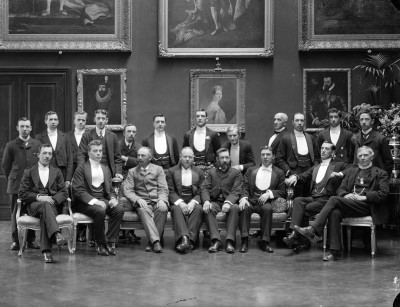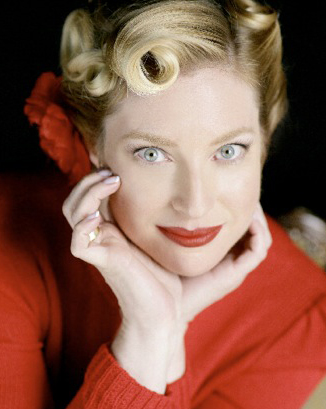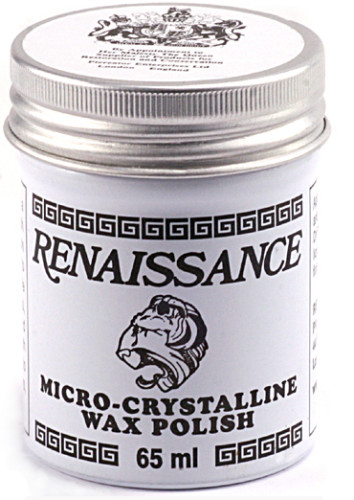
The Modern Butlers’ Journal volume 12, issue 3
International Institute of Modern Butlers
Teaching Right Mindset, People Skills, & Superior-service Expertise
Message from the Chairman
As the story below, about the young butler being sued illustrates, one can sometimes run afoul of house rules for the managing of work-issued credit cards—where the lines are to be drawn. Another example of exactly this trap crossed my desk(top) yesterday, whereby a young lady, fresh on a household manager position and eagerly awaited by the employer to take control of the estate management, was fired for this exact same transgression within days of being hired. A lose-lose for all concerned.
There is no substitute for making sure that clear instructions are given and received on the subject of what purchases are permitted on a company credit card—and it is ultimately the butler’s responsibility to make sure that the rules are made known and clear to everyone in a staff manual: employer, family office, butler, and other employees.
While the employer will presumably find other employees after further search, we sincerely hope that the household managers/butlers who fell short will pick themselves up and learn from their mistakes.

Letters to the Editor
I am serving afternoon tea to Lord and Lady […] this coming weekend. In the 20+ years I worked with [employer name], his mother and I had a pot of tea every afternoon when she was in residence. She always served, so I have never served tea myself! I have reviewed Chapter 9 in Butlers & Household Managers, 21st Century Professionals. I had planned on wearing a long coat with a black vest and long tie with a batwing shirt. What do you suggest? AS
Ed: It sounds like you will have fun creating a wonderful experience for Lord and Lady […]. There is not much to add to the English Afternoon Tea section of the 2008 edition of Butlers & Household Managers, 21st Century Professionals.
I suggest dummy running (practicing) by serving tea to a friend following the procedure (and checklist) in the book, and so polishing your presentation while also making sure that all the proper items are in supply. If possible, do so in the exact spaces where you will be serving the guests, so that problem areas will make themselves apparent and you can pre-empt them in a timely fashion. Here’s to a flawless presentation and smiling guests (and host, no doubt).
How does my uniform sound? I decided not to wear white tie and vest (English translation: “waistcoat”) because that outfit appears to be too formal for 4:00 pm. Am I correct? AS
Ed: To be frank, the uniform is a bit over the top for afternoon tea. Probably what the Lord and Lady would expect of butlers in America, though! One would normally wear day dress for afternoon tea rather than evening wear: lose the tails and instead don a black waistcoat, normal-collared shirt, grey or black tie, black or grey/black-striped trousers, Oxfords.
People tend to think of butlers as wearing tails and white gloves all the time, but the fact is these are evening wear and for formal occasions. If you want to ham it up, go ahead and wear the black tails, etc., but I am pretty sure the guests would think you were trying to attract attention and had it wrong.
Thank you, Sir. My final question: should I wear white gloves? AS
Ed: No—real butlers never did and don’t. They are for formal occasions, or possibly for laying silver and crystal on a table so as to avoid smearing oils from the hand on them that would spoil their polished look.
Thank you so much. I never wore gloves when serving anything to [employer]. He didn’t trust the laundry to kill all the germs. When I worked for [earlier employer], I believe we wore them to set table as you suggested, to keep the oil from our hands off the flatware, which were made of gold and silver. Those were the days, but that is a story for another day. AS
Ed: Indeed!
As a follow-up, [the event] went very smoothly and I was magnificent! AS
Butlers in the Media
To the long list of goods and services including the word “butler” in their name, we can now add “Pocket Butler” (unclear what it is); a “Boot Butler” to organize one’s boots; a Battery Butler—a Sheraton employee who recharges various electronic devices for hotel guests; and lastly, a new twist on “Dog Butler” in that it is not someone who walks the dogs, but who merely cleans up after them—which says something about dog owners these days.
And as we drop down the scale of propriety, we have topless (male) “butlers” doing their thing, and finally, a “butler” who is currently being sued for using a co-worker’s credit card (for business-related expenses) for a meal for himself; when fired, he used the work credit cards assigned to four other staff to make further personal purchases in protest of his firing. The fired butler’s lawyer is claiming the butler had been “having trouble recently as he is bipolar and off his medication;” also that he comes from ‘a family of means’ who live in an ‘affluent suburb’ and are prepared to pay full restitution.
If these are all accurate statements of fact, then one can only shake one’s head at the lack of responsibility and low ethics level exhibited by this young man, who took it upon himself to join the profession with an obvious lack of understanding of how to execute his duties faithfully—if indeed he were ever trained in the duties in the first place—and having perhaps too much of a sense of entitlement and an idea of the need for status over substance. We hope he can can find guidance that will help disentangle him from this morass he has wandered into, and that he can start to make something of his life.
As for the bigger picture, since the young man was in the position only one month, hopefully employers reading this sad story will not feel compelled to tar all butlers and household managers with the same brush.
Let’s Talk about Mixology, Part 10
by Amer Vargas
Of Grasshoppers
Especially for those who like to laugh at the exploits of the geeks in Big Bang Theory, today we will discover the recipe that may have awoken the ability of shy-with-the-ladies Rajesh Koothrappali to talk to them.
 It starts when Raj attends a blind date set up by his parents with Penny, who is keen to practice her mixology skills so that she can perform more professionally during her barkeeper shifts. After preparing a Tequila Sunrise for Leonard, a mutual colleague, Penny asks Raj what he would like. Since he finds it uncomfortable to talk to her, he whispers in Leonard’s ear to tell her he would like whatever she suggests; to which she replies, “What about a grasshopper? I make a mean grasshopper.” And so ends the episode.
It starts when Raj attends a blind date set up by his parents with Penny, who is keen to practice her mixology skills so that she can perform more professionally during her barkeeper shifts. After preparing a Tequila Sunrise for Leonard, a mutual colleague, Penny asks Raj what he would like. Since he finds it uncomfortable to talk to her, he whispers in Leonard’s ear to tell her he would like whatever she suggests; to which she replies, “What about a grasshopper? I make a mean grasshopper.” And so ends the episode.
Let’s see how this soft and sweet cocktail is made. The Grasshopper has a distinctive green color (the reason for its name), as a consequence of having crème de menthe among its ingredients—the others being fresh cream and crème de cacao.
The preparation is really simple: the ingredients are poured in equal parts, generally 1 oz/3 cl each, into a shaker with ice. Once the mix is shaken and chilled, it is served strained in a classic cocktail glass and decorated with a two or three leaves of mint.
Enjoy responsibly and have fun with the drink (and the TV show, if it suits you).
Mr. Vargas is the Institute’s President and can be contacted via AmerVargas @ modernbutlers.com
Personalized Amenities
A new example from Mr. Gutman of that extra creative touch in personalizing an amenity for a guest.
Of Butlers and Roses, Part 23 of 25
by GJ dePillis
A Rose by Any Other Name can be Delicious
While the chef is focused on creating attractive, nutritious, and delectable dishes for the family and guests, it might be a good idea to augment the service with roses from the garden.
A large centerpiece with delightfully arranged roses, for instance, could be a talking point during the meal. Rose petals can be placed in finger bowls when guests need to use their fingers for a particular dish. Rose boutonnières can be provided for the gentlemen when the occasion calls for it. Or maybe for the ladies, a single long stem rose by which to remember the evening. Bowls of rose potpourri could be used to scent the air.
All of these are excellent uses of the rose, but how about eating one?

Rose (Rosa Rugosa or Gallica Officinalis) petals have been described as having a mild sweet taste (once the bitter, white parts have been removed). The stronger the fragrance of the rose, the more intense the flavor. The rose bud (Cercis Canadensis) is also edible. Rose hips, or the little pill-sized red fruits left behind after the rose bloom has faded and fallen off, has medicinal properties and contains high amounts of vitamin C. The rose hip has been described as fruity yet spicy, like a cranberry. The Rosa Rugosa variety is considered one of the most flavorful.
To harvest rose hips, wait until the first frost and pick soon before the rose hips become overripe, as characterized by becoming soft and wrinkled. If the chef is not familiar with cooking rose hips, you may want to remind him to remove the hairy seeds inside and avoid using metal pans and utensils during preparation (other than stainless steel).
Next month, we will discuss some recipes using roses. Until then, happy rose-menu planning
Ms. dePillis is a freelance contributor to the Journal who is based on the West Coast of the United States. She can be reached via depillis @ gmail.com
 Consulting the Silver Expert
Consulting the Silver Expert
by Jeffrey Herman
Q: Should I lacquer my silver?
A: Lacquering silver and silverplate is generally not recommended for a number of reasons:
- The individual may not properly prepare the object’s surface to accept the lacquer.
- It’s very difficult to obtain a uniform coating, even when applied by a professional.
- If the coating is not applied well, it may have streaks and small holes, allowing tarnish to form.
- Lacquer will eventually yellow and crack, allowing tarnish to form within the fissures and eventually under the protective coating. Strong solvents must then be used to remove the lacquer and the piece refinished. Take a look at these pieces that were once lacquered.
 Because of the above issues, Renaissance wax – an archival micro-crystalline product – is recommended for those wanting to lacquer their silver.
Because of the above issues, Renaissance wax – an archival micro-crystalline product – is recommended for those wanting to lacquer their silver.
Renaissance will not yellow or crack and will last for years if handled properly. Renaissance wax is not as durable as lacquer, so the object should be handled with heavyweight natural cotton jersey inspection gloves as acid from fingers may eventually remove it. Since dust can be acidic and eventually wear through the wax, placing your silver in a closed display will help insure that particulate matter will not fall on the object’s surface. Whether inside or outside a display case, every few months gently wipe the object with a Selvyt* cloth or soft cotton cloth. This will keep the wax or silver polish with tarnish protectant from breaking down prematurely.
Renaissance wax should not be used on flatware or other objects that will be used to eat from. When applying Renaissance, do so in small areas at a time (no larger than a 3″ square). Buff immediately with a soft cotton cloth, cotton ball, or make-up pad. Overlap each area to insure the entire surface is coated.
* [A trade name for a microfiber cloth available in England for £11 each. Terga cloths from Sweden were the originals and are about the same price. Cheaper Chinese knock-offs can be found in stores that have, so far, not been found to be as reliable in performance or as long lasting by the editor].
Mr. Herman continues to offer his services to our readers for any questions you may have about the care of silver. Either call him at (800) 339-0417 (USA) or email jeff @ hermansilver.com
The Institute is dedicated to raising service standards by broadly disseminating the mindset and superior service expertise of that time-honored, quintessential service provider, the British Butler, updated with modern people skills, and adapted to the needs of modern employers and guests in staffed homes, luxury hotels, resorts, spas, retirement communities, jets, yachts & cruise ships around the world.



